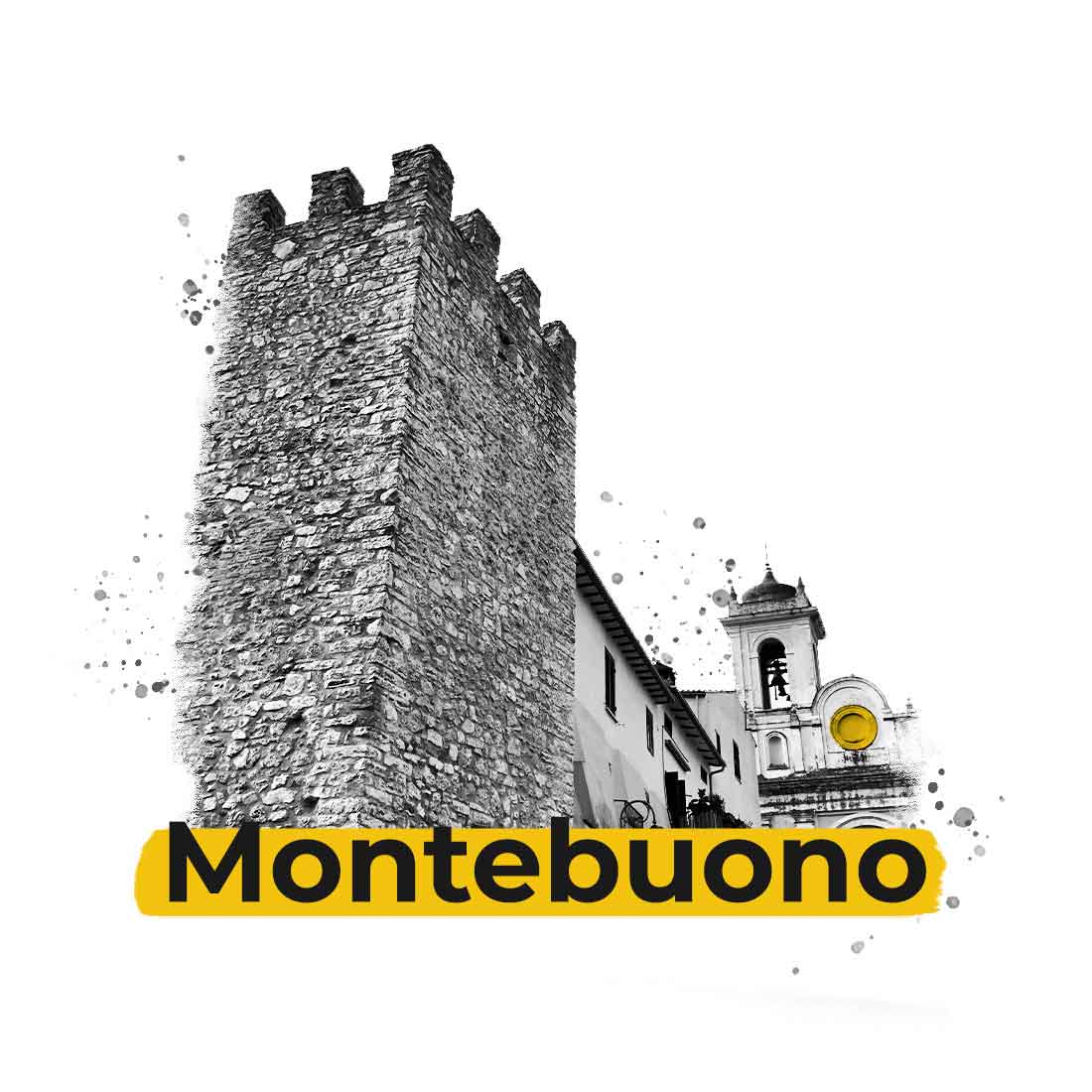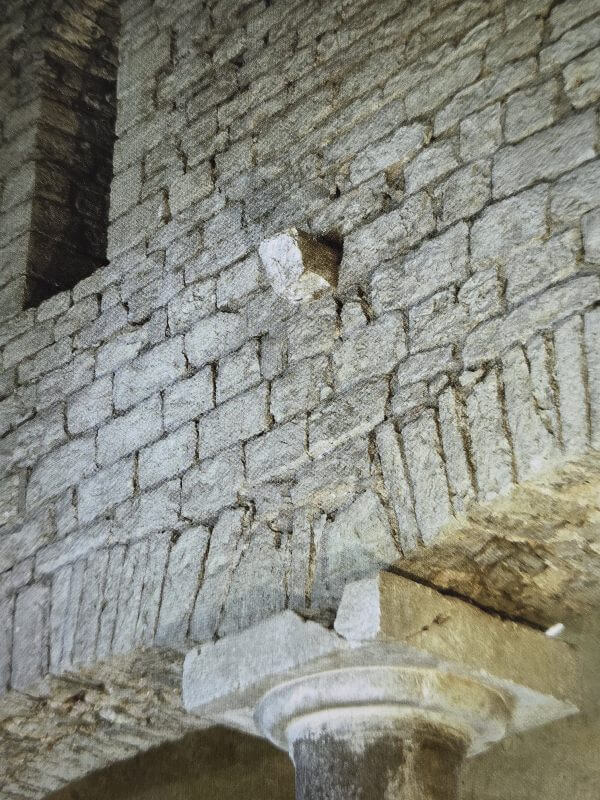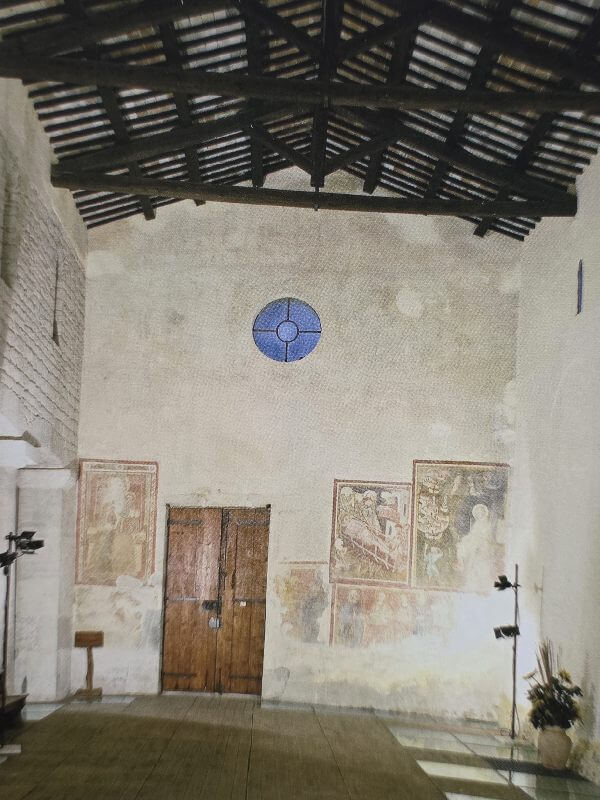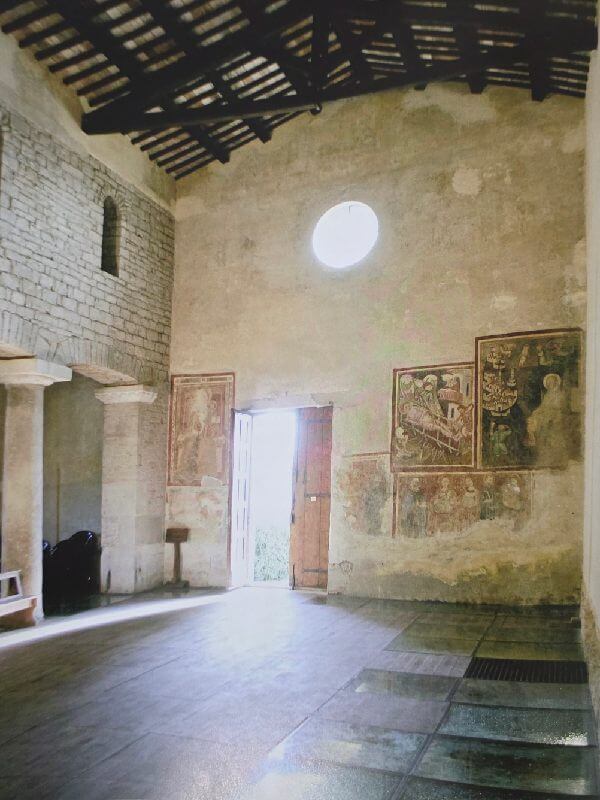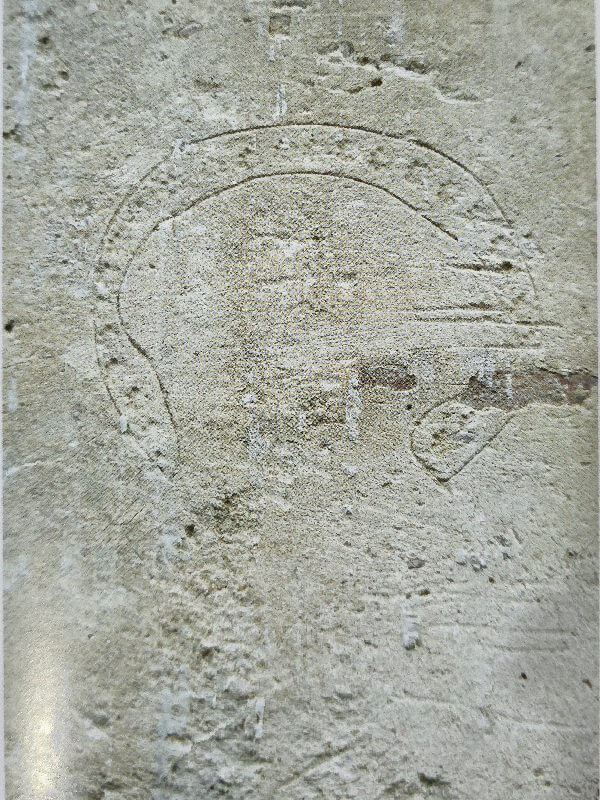The Church of St. Peter ad Muricentum

Posizione
Via Sargnano, 2
02040 Montebuono RI

Orari di apertura
Aperta durante le funzioni religiose
In the heart of Sabina, in the locality of Grignano, stands the striking Church of St. Peter, also known as “ad Centum Murum” or “ad Muricentum.” Its name derives from the presence of numerous Roman remains that surround and characterize the building, testifying to the historical stratification of this area. Stylistically akin to medieval Umbrian churches, the structure has undergone several remodels over the centuries, including the demolition of the left aisle.
As early as the 19th century, scholars identified the ancient structures visible near the church as the remains of a Roman villa that belonged to Agrippa, son-in-law of Emperor Augustus. This hypothesis was supported by the discovery of an inscription dedicated to Agrippa with reference to his third consulate (27 B.C.), originally reused in the high altar but now lost. Another epigraph, partially preserved, is currently walled on the facade of the former parish house in Umberto I Square.
Documents from the Abbey of Farfa mention a “fundus Licinianus,” suggesting that the villa later passed to the Licini family. Numerous Roman architectural elements, including marble fragments and squared blocks, were reused in the construction of the facade and bell tower, demonstrating the continuity of use of the area over the centuries.
During the 19th century, priest Don Angelo Torri found mosaics, frescoed walls and a marble slab with the inscription “Fortunae Sacrum” in the area. This epigraph, also mentioned by Count Genuini, was later removed and given to a prelate connected to Cardinal Andrea Corsini. Today, on the bell tower of the church, the space where it was probably placed is still visible.
During recent restoration and resurfacing work, the Soprintendenza ai Beni Archeologici del Lazio uncovered additional Roman structures, confirming the historical importance of the area. The excavations revealed a complex archaeological stratification, with Roman remains damaged by the construction of ossuary pits, some of which reach a depth of four meters and feature stone walls and brick vaults. One of these pits, large in size and with plastered walls, may originally have been a cistern, later repurposed as an ossuary in the late 19th and early 20th centuries.
Inside the church are numerous reused elements from the pre-existing Roman villa: cipolin and granite columns, capitals, marble architectural fragments, and squared blocks. Of particular interest is an epigraph painted on a block incorporated into the second pillar of the church, bearing the name “Ativs,” the authenticity of which remains a matter of debate among scholars.
Despite severe tampering over time, excavations have revealed rooms with mosaic floors, decorated walls and reticulated and quasi-reticulated masonry, confirming the archaeological importance of the site. The Church of St. Peter ad Centum Murum thus represents an authentic treasure chest of history, capable of recounting centuries of transformations and fascinating visitors and scholars alike.

